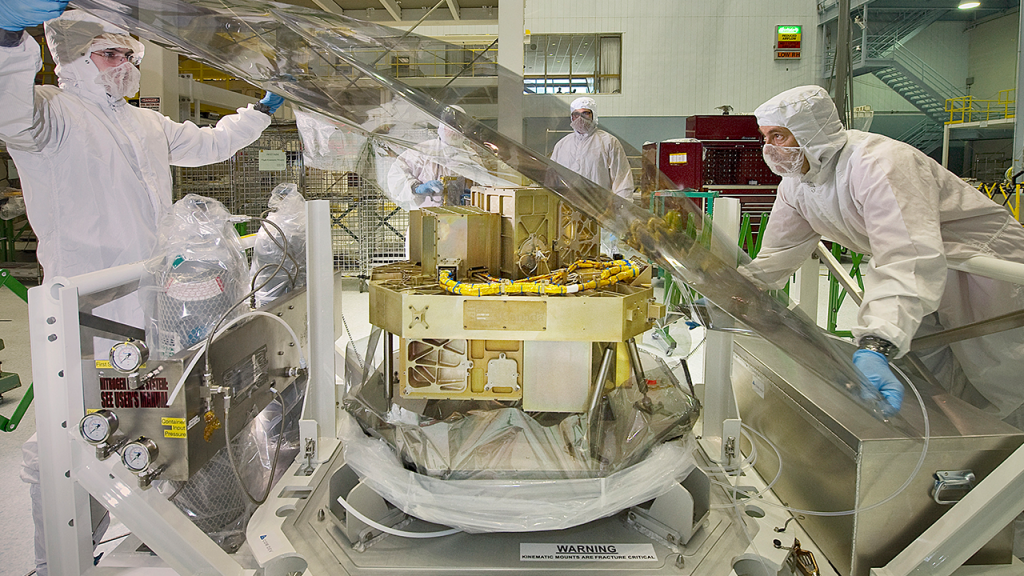We continue to explore Webb’s instrumentation this week, highlighting the Canadian contributions to the mission. As you’ll see, the Near-Infrared Imager and Slitless Spectrograph (NIRISS) instrument is ideally suited for studying two of Webb’s scientific themes. Scientists will use NIRISS to take advantage of the natural phenomenon of the atmospheric transmission of transiting exoplanets and the gravitational lensing of galaxy clusters, to help us learn more about these intriguing objects. René Doyon, scientific lead for NIRISS, and his colleagues help us understand NIRISS’s capabilities:
“NIRISS is one of two contributions to the Webb mission from the Canadian Space Agency and other Canadian partners. Its development over two decades has been full of twists and turns, but we are very proud with the instrument that resulted from all our work!

“NIRISS is coupled with Webb’s Fine Guidance Sensor (FGS) within a single module about the size of your average washing machine. FGS is one of several of Webb’s mission-critical sub-systems whose function is to keep the observatory aimed at its target with exquisite accuracy to enable the sharpest possible images. FGS will be capable of detecting a tiny angular displacement of the telescope equivalent to the thickness of a human hair as seen from one kilometer away. NIRISS is a scientific instrument with several observing modes that will allow astronomers to study a multitude of different types of celestial targets to reach many of Webb’s scientific objectives.
“With incredibly high-precision spectroscopy, NIRISS will study the chemical composition of the atmospheres of exoplanets, searching for conditions that may be favorable for life. As the light from a distant star passes through the tenuous atmosphere of its transiting exoplanet, a very small fraction of the light is absorbed by atoms and molecules. This “molecular fingerprint” of the atmosphere tells us about the gases and atmospheric conditions on these alien worlds.
“In another observing mode, NIRISS will capture the spectra of over a thousand galaxies in one shot to map extremely faint and distant galaxies as they appeared shortly after the big bang. When they were first formed a few hundred million years after the start of the universe, these galaxies shone very brightly in ultraviolet and blue light. As their light travelled across an expanding universe, it was stretched and redshifted into infrared light, making a near-infrared instrument like NIRISS the perfect tool to study the nature of these very early galaxies.
“NIRISS will also use a clever technique called Aperture Masking Interferometry to directly image celestial objects that are very close together in the sky. Solar systems being born, brown dwarfs, and exoplanets very close to their parent stars will be captured by the instrument to better understand how these objects form and evolve over time.
“NIRISS, along with Webb’s other scientific instruments, will truly open a new window on the cosmos and unfold the universe as we have never seen it before. After many, many years of imagining, developing, constructing, testing, and waiting, NIRISS and FGS are ready for launch! On behalf of the Canadian Space Agency, Honeywell Aerospace, the National Research Council of Canada, the Université de Montréal, and the entire NIRISS science team, we cannot overstate how excited we are for this milestone moment to finally be here!”
—René Doyon, Nathalie Ouellette (Université de Montréal), and Chris Willott (NRC-Herzberg)
By Jonathan Gardner, Webb deputy senior project scientist, NASA’s Goddard Space Flight Center
And Alexandra Lockwood, project scientist for Webb science communications, Space Telescope Science Institute
